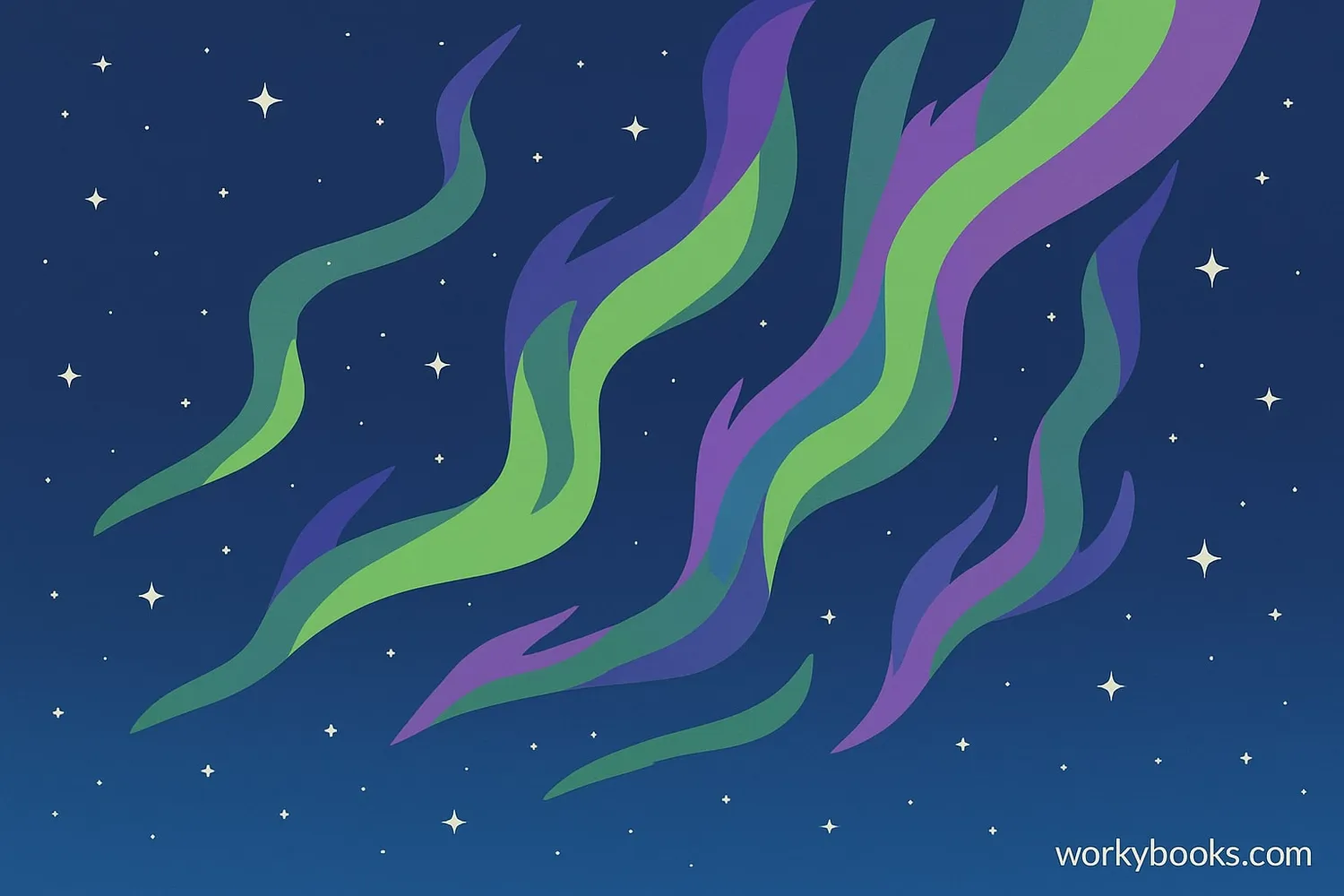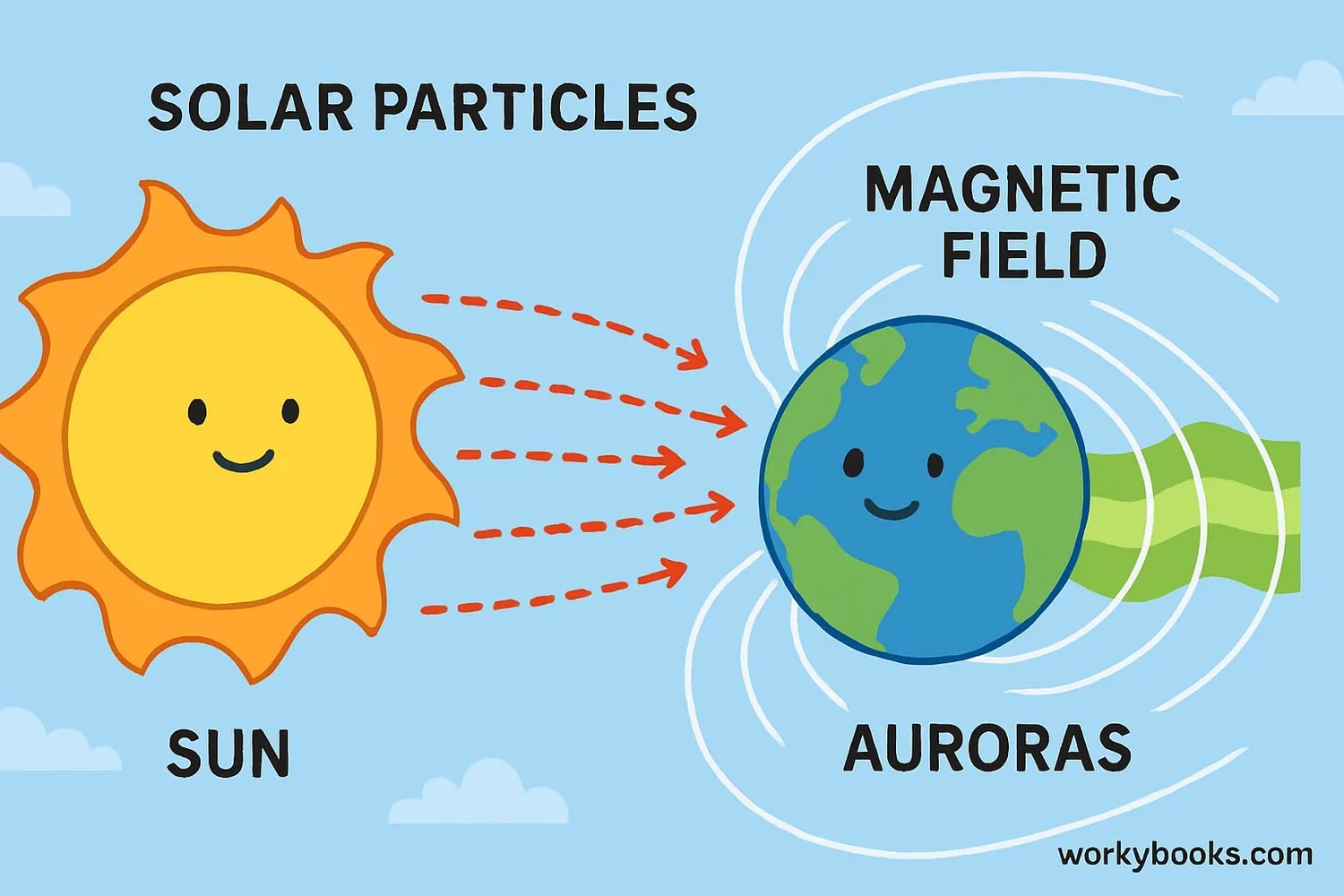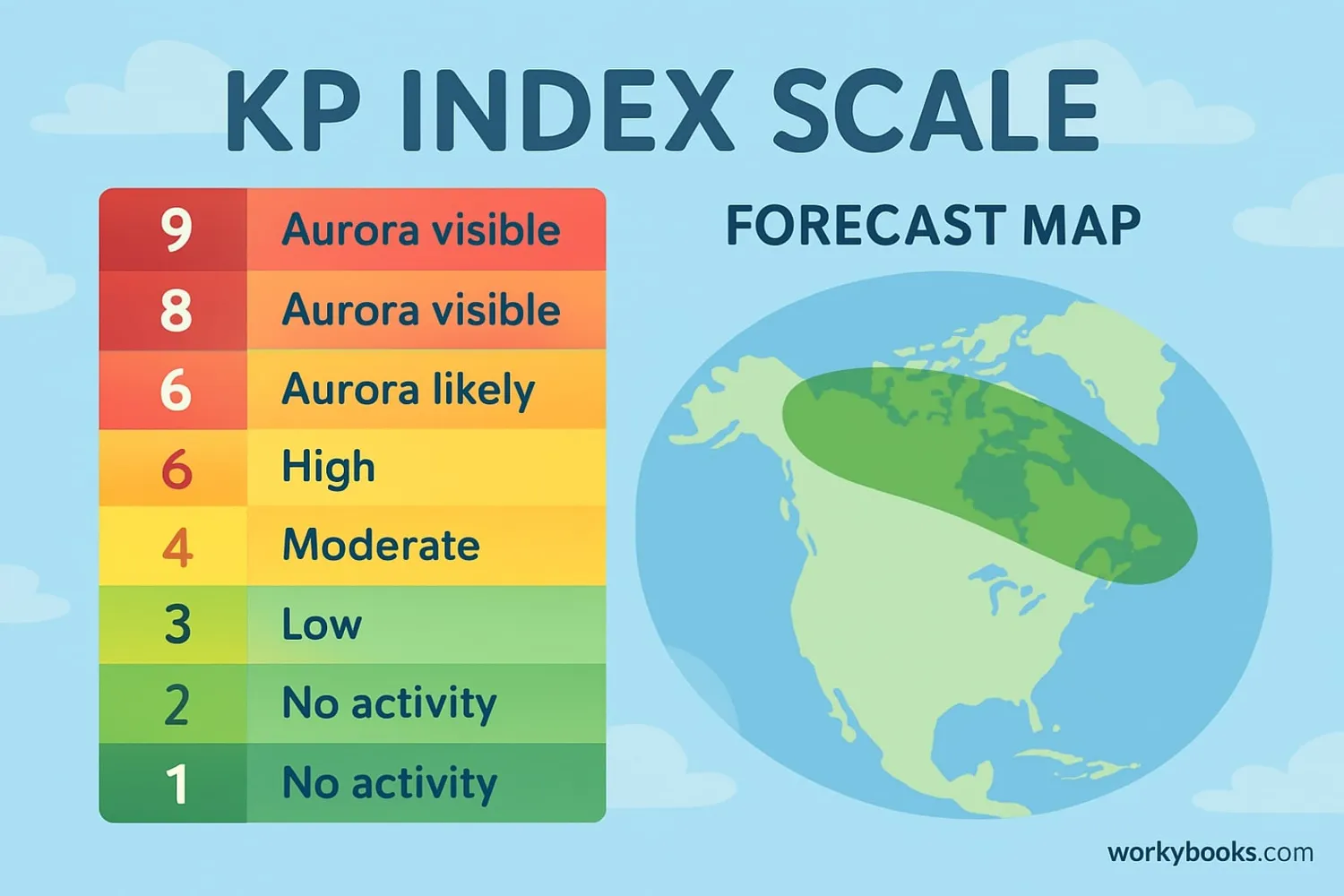Aurora Borealis - Definition, Examples, Quiz, FAQ, Trivia
Discover the science behind Earth's most spectacular light show!
What is the Aurora Borealis?

The Aurora Borealis, also called the Northern Lights, is a natural light display in Earth's sky. It appears as colorful curtains, rays, or spirals of light that dance across the night sky near the North Pole. The name comes from Aurora, the Roman goddess of dawn, and Boreas, the Greek name for the north wind.
These lights occur when electrically charged particles from the Sun collide with gases in Earth's atmosphere. The most common color is green, but you might also see pink, red, yellow, blue, and violet lights dancing across the sky!
Color Fact!
The colors of the aurora depend on which gas particles are hit by solar particles and at what altitude!
How the Northern Lights Happen

The amazing light show of the aurora happens through these steps:
Solar Flares
The Sun releases charged particles during solar storms
Solar Wind
Particles travel toward Earth as solar wind
Magnetic Field
Earth's magnetic field guides particles toward the poles
Collisions
Particles collide with oxygen and nitrogen atoms
Light Emission
Atoms release energy as colorful light
The different colors come from different gases:
• Green - Oxygen at lower altitudes (60-150 miles)
• Red - Oxygen at high altitudes (above 150 miles)
• Blue/Purple - Nitrogen molecules
Solar Connection!
The Sun goes through an 11-year activity cycle. Auroras are most frequent and spectacular during solar maximum periods!
Best Places to See the Northern Lights
The Northern Lights are best seen in the "Auroral Oval" - a ring-shaped region around the North Pole. Some of the best places to see them include:
Norway
Tromsø, Lofoten Islands, Svalbard
Iceland
Reykjavik, Thingvellir National Park
Canada
Yukon, Northwest Territories, Alberta
Alaska
Fairbanks, Denali National Park
Finland & Sweden
Lapland region near the Arctic Circle
Best Time to View: September to March when nights are longest and darkest. The lights are visible between 5 PM and 2 AM, with peak viewing around midnight.
Viewing Tips:
• Get away from city lights
• Check the weather for clear skies
• Be patient - the lights can appear any time
• Dress warmly - Arctic nights are cold!
Forecasting the Northern Lights

Scientists use special tools to predict when and where the Northern Lights will appear:
KP Index
Measures geomagnetic activity (0-9 scale). Higher numbers mean better viewing!
Solar Monitoring
Satellites track solar flares and coronal mass ejections
Weather Forecast
Clear skies are essential for viewing the aurora
Photographing the Northern Lights:
• Use a camera with manual settings
• Use a tripod to keep the camera steady
• Set a long exposure time (5-30 seconds)
• Use a wide-angle lens for best results
• Set high ISO (800-3200)
• Focus manually to infinity
Aurora Borealis Quiz
Test your northern lights knowledge with this quiz! Answer all 5 questions to see how much you've learned.
Frequently Asked Questions
Here are answers to some common questions about the Aurora Borealis:
Northern Lights Trivia
Discover some amazing facts about the Aurora Borealis!
Ancient Observations
The earliest known record of the northern lights dates back to 2600 BC in Chinese chronicles. Galileo Galilei named the phenomenon "Aurora Borealis" in 1619.
Not Just Earth
Other planets have auroras too! Jupiter and Saturn have spectacular auroral displays that are much larger and more powerful than Earth's, visible only from space.
Powerful Energy
A single auroral display can release more energy than a large earthquake. The 1859 Carrington Event aurora was so bright people could read newspapers by its light at night!
Cultural Significance
Many cultures have legends about the lights. Some Indigenous peoples believed they were spirits of ancestors, while Vikings thought they were reflections from the armor of warrior maidens.


